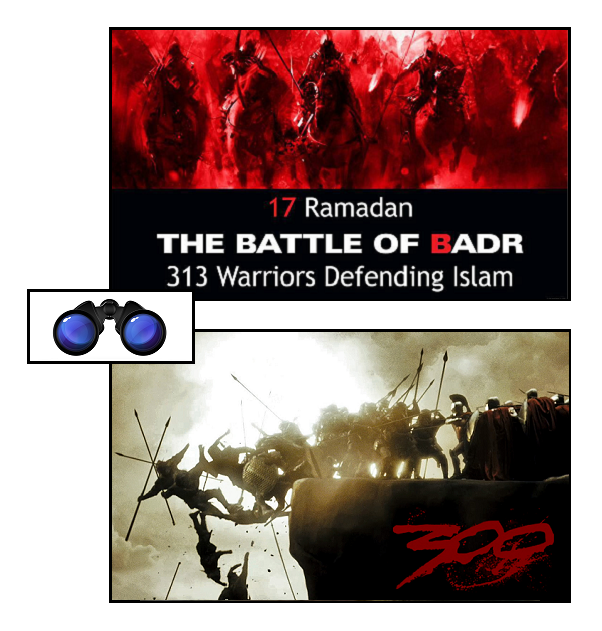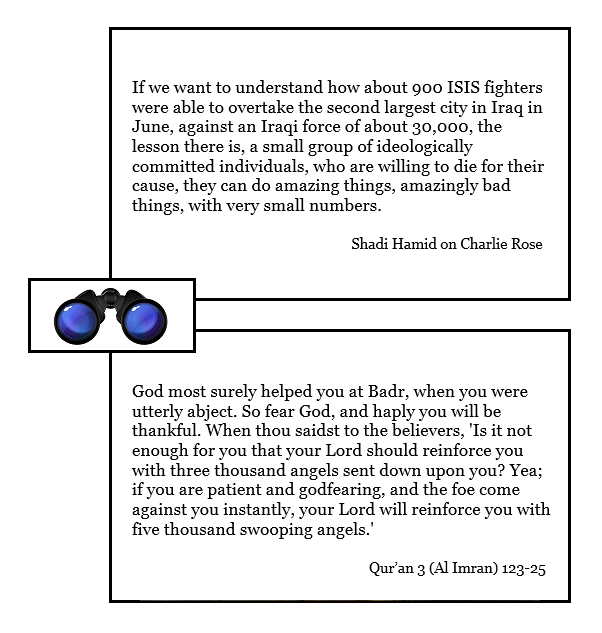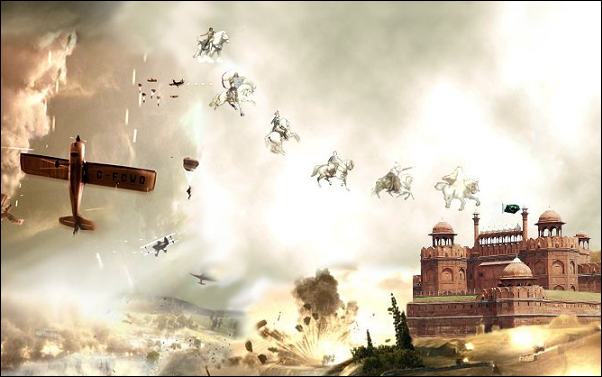[ by Charles Cameron — how sky differs from heaven, and what that means for morale and jihad ]
.
**
Okay, that Spartans / Battle of Badr DoubleQuote above is just a teaser, locating us in the general zone of morale..
What I’d really like to offer you here is another Badr-related DoubleQuote, of which the first part comes from Shadi Hamid, speaking about half way through the Charlie Rose show, A conversation about Islam and politics with Reza Aslan, Will McCants, Michael Hanna and Shadi Hamid, which aired on the 14th of this month (full video at the bottom of this post). He said:
We have to take religion seriously, but I worry sometimes, if we focus too much on religion we forget that there’s a political context. That if we want to understand the rise of Isis we can’t understand that without looking at the political vacuum that emerged in Syria. That didn’t happen by itself; there’s a series of policy decisions from the international community that helped contribute to the rise of ISIS.
So I guess the interesting question then is, How does religion interact with these political factors. So we have to bring those different variables into focus and I think we lose some of that, we lose that complexity if we’re just saying Islam is the problem. On the other hand, though .. these terrorists and extremists, they believe that what they’re doing, they’re going to be granted direct entry into Paradise, and that inspiration, motivation, is a very powerful thing that we shouldn’t underestimate. And ideology in this sense is a sort of force multiplier on the battlefield.
All of that seems relevant to me, but it’s his next few phrases I want to DoubleQuote (upper panel, below):
And whereas Hamid’s explanation, as befits a Brookings Fellow refers to a belief about Paradise, the Qur’an, as befits sacred scripture, treats the world as though it is thronged not with beliefs but with angels..
**
The comparison and contrast between our conntemporary, post-Enlightenment view of “the sky” (in which birds, planes, helicopters, missiles and drones may be found, but no angels, jinn, apsarases or faeries) and that of the world’s various scriptural and mythological “heavens” (in which helicopters and parachutes are generally absent, though angels, demons, gandharvas, apsarases and the rest abound) is one that has long fascinated me — but the two are usually kept distinct. Albrecht Durer will show you angels and demons just above the rural countryside in “heaven” — but you won’t find them in military aviations journals..
It is against that background that I find this piece of artwork about the Ghazwa e-Hind so interesting — it appears to envision both “sky” with its various planes and parachutist (most of the planes a little dated, alas), and “heaven” with its celestial cavalry, occupying the same visual space:
**
All this leads me to the question — which would seem to become ever more urgent as we move from textual to visually enhanced modes of communication —
How does one graphically depict morale or esprit de corps?
That’s my question for the day.
** ** **
Here, for those who would like to view it in its entirety, is the Charlie Rose show from which Shadi Hamid’s quote above was taken:





